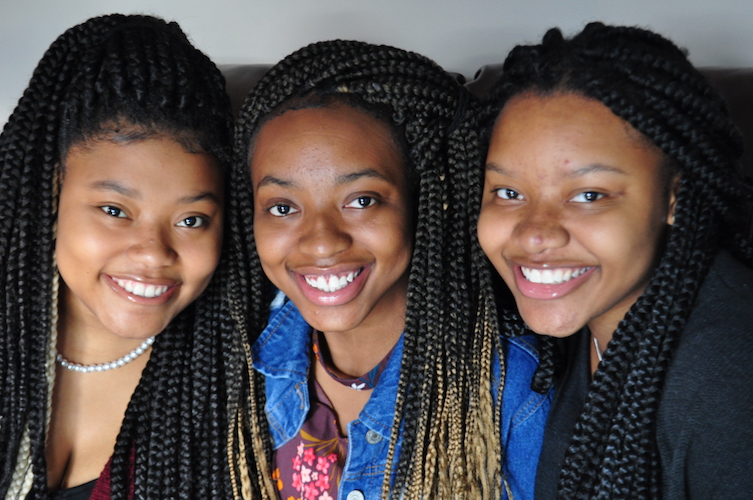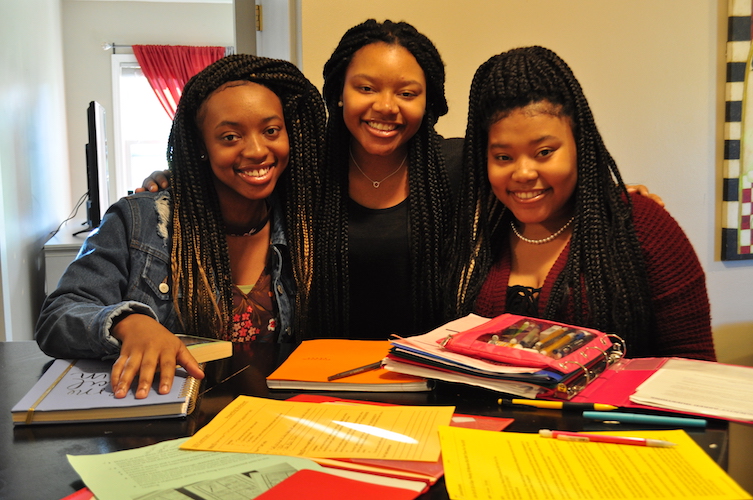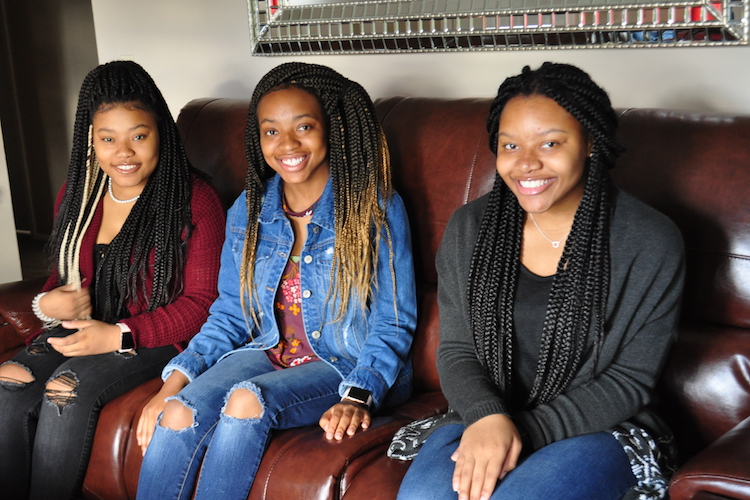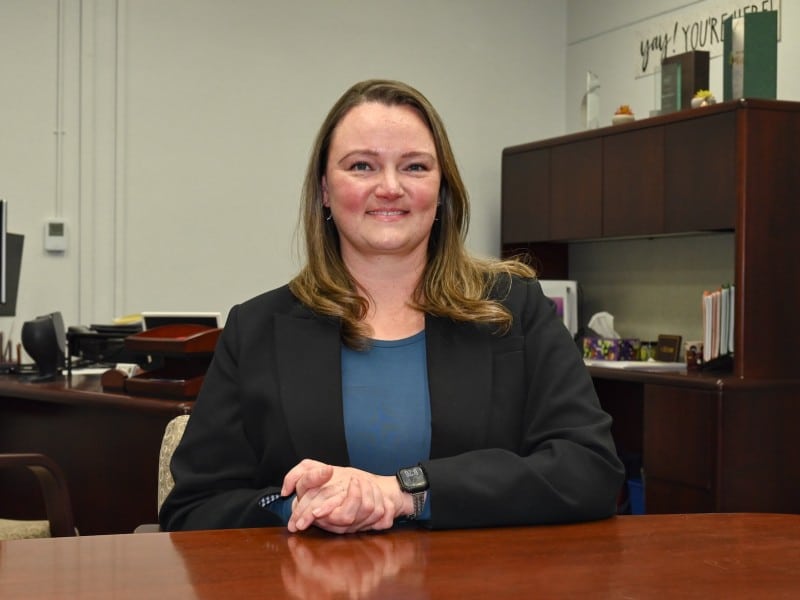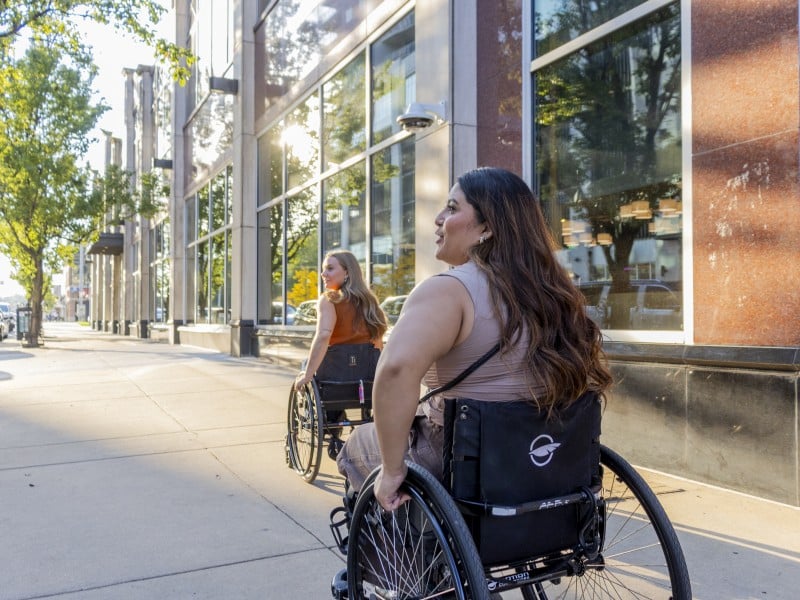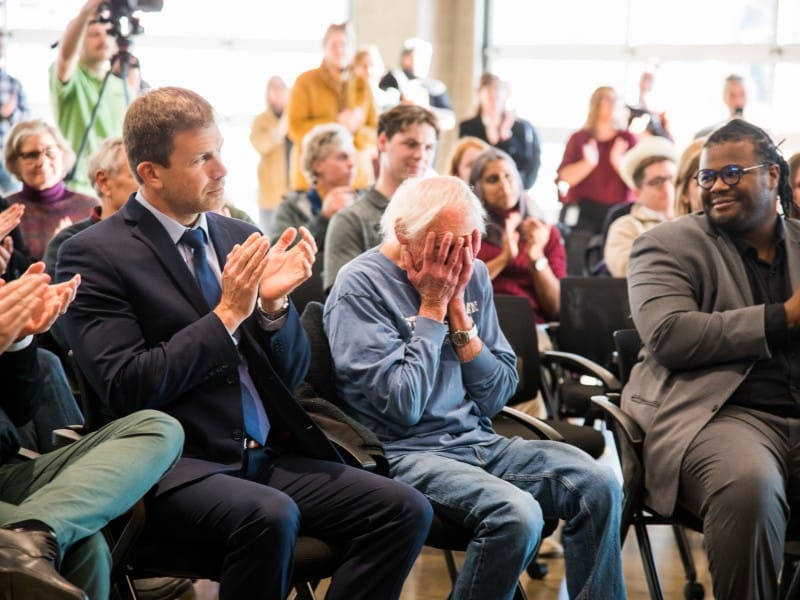Living with sickle cell anemia: A Northside family’s experience
Sickle cell anemia affects one out of every 365 African Americans. On the Ground Northside youth correspondent Ke’Asia Shepherd-Friday tells her family's story.
Editor’s note: This story is part of Southwest Michigan Second Wave’s On the Ground Northside series.
Ke’Asia Shepherd-Friday, 17, an On the Ground Northside Youth Community Correspondent, writes about her sister’s experience living with sickle cell anemia, a disease that affects one out of every 365 African Americans. She describes how this disease impacts her sister and her family. Ke’Asia, a senior at Phoenix High School, lives with her mother, Natasha Shepherd, twin sisters, Ke’Aujanaa and Ken’Aujune, 16, and sisters, Sa’Rai Mullen, 7, and Zurii Mullen, 3. She also has three older siblings, NeQuala Shepherd, 29, Tishombe Palm, 27, and Aleah Shepherd, 25, and a grandmother, Dorease Braxton-Russell, 65, who are very involved in supporting the family.
If you had sickle cell anemia how would that change your life today? I have a sister who is 16 years old. She was born with sickle cell anemia.
”Sickle cell broke me because I can’t do what others can do, such as sports, going to high school events, homecoming, basketball, football games, or to my twin’s cheer competitions,” Ke’Aujanaa tells me. Ke’Aujanaa was diagnosed with sickle cell anemia at birth, which is when most African American infants are tested.
The doctors suspected Ke’Aujanna had sickle cell anemia because her newborn eye whites and skin were yellow. Doctors also tested her twin, Ken’Aujune, and found out she had the trait, but not the disease. Both my mother and father also have the sickle cell trait.
Honestly, I think it was hard on my parents because not only did they have twins, but they had twins with sickle cell anemia. My father did not stick around. He just wasn’t strong enough. I applaud my mother and all mothers out there going through the same thing or something similar. You have multiple blessings coming your way.
How does sickle cell affect my family?
Sickle cell anemia affects my family because it’s a lot to deal with and Ke’Aujanaa is only a teenager so she can’t really take care of herself on her own. Since my dad is not around, my mother and all my older siblings try to help as much as possible. The ways we help my mother are we sometimes take Ke’Aujanna to doctor’s appointments, buy foods she needs, treat her when she is ill at home, and much more.
What is sickle cell anemia?
Sickle cell anemia is a blood cell disease. With this disease the bad blood cells, called sickle cells, are crescent-shaped. This change in the red blood cells causes pain. Sickle cell pain is so dreadful, it takes your breath away and feels like someone stabbing at the bloodstream several times. There are times where those who have it can’t walk, sleep, eat, or function in any way.
Sickle cell anemia affects 100,000 Americans, mostly African American and Hispanic Americans. One out of every 365 African Americans, and 1 out of every 16,300 Hispanic Americans have it. Having the trait is even more common with 1 out of 13 African Americans born with the trait meaning they may possibly pass the disease on to their babies.

It is hard to watch someone you love suffer a sickle cell crisis. The first time I witnessed a crisis was when I was 8 years old and Ke’Aujanaa was 7. The first symptoms started when Ke’Aujanaa was at school. She was running in gym class and felt pain in her chest. Ke’Aujanaa asked to go to the office. When she got to the office, she asked if she could call our mom. While she was in the office, she started getting shortness of breath, and the office workers panicked and called the ambulance.
The paramedics brought the stretcher into the building, put Ke’Aujanaa on the stretcher, and asked her questions. “What’s your mother’s number?” and “What’s your pain tolerance from 1 not being that bad to 10 very bad?” Ke’Aujanaa said a 10. They took vitals after speaking with my mother. Ke’Aujanaa was then put in the ambulance, but the ambulance did not take off until my mother arrived.
After the ambulance arrived at the hospital, they rushed Ke’Aujanaa into the emergency room. The nurses did some tests and found out her hemoglobin was low so they gave her an I.V. Then she was admitted into the hospital because she had acute chest syndrome. To treat the acute chest syndrome they gave her a blood transfusion and put Ke’Aujanna on oxygen.
Later on in life
Now fast forward to the midpoint of Ke’Aujanna’s 10th-grade year. Ke’Aujanaa woke up and her legs were hurting, but not to the point where she couldn’t get out of bed. So she dressed and went to school. When she got off the bus, she was walking home with her twin, Ken’Aujune, and on this day when the temperatures were getting colder, she started feeling more pain (low temperature contributes to an increased chance of a crisis). Ken’Aujune helped Ke’Aujanaa get home as quickly as possible.
After they arrived home, Ke’Aujanna took her medicine and we made her hot packs and she took a nap. The next day her pain was worse. She did not attend school and my mom took her to the E.R as soon as she came home from work. Later Ke’Aujanna was admitted into the hospital. She was so sick she had to be put into a coma. She was in the coma for an entire week.
When she was in the coma, it was very hard on me, but it was especially hard on my mom. When your 15-year-old daughter is put to sleep for health reasons with a 50 percent chance of living, it is heartbreaking and it can make or break a mother. Ke’Aujanna was in the coma is because they found pneumonia, which was making her symptoms more painful.
Her pneumonia got very bad to the point where she couldn’t breathe on her own. When Ke’Aujanaa was in the coma, she was fed with a feeding tube. No one under the age of 16 could visit her. It was that bad. She could hear every word we were saying, though. She remembers “Mom was talking to me the whole time saying, ‘Neille, it’s going to be okay.’” She says she could hear my mother praying.

When Ke’Aujanaa woke up, she did not know that she had been in a coma. She thought she went to sleep and just woke up the next day. After that episode, the doctors came to the conclusion that if Ke’Aujanaa has a blood transfusion every two weeks, that will stop the crisis. The blood transfusion helps to increase the number of red blood cells so that there is less chance of anemia.
In the summer, Bronson Methodist Hospital stopped the blood transfusions and Ke’Aujanaa’s care was transferred to the Helen DeVos Children’s Hospital located in Grand Rapids. The doctors at DeVos said they were going to take over because Ke’Aujanaa needs a bone marrow transplant.
When we visited DeVos Children’s Hospital, everyone was very nice. To receive a bone marrow transplant, you need someone with the same blood type as you. All of my siblings were tested. Usually, siblings aren’t a match, but Ke’Aujanna and I were a perfect match with blood type A positive.
We talked with all the doctors at DeVos who specialize in sickle cell anemia and cancer, and we all came to the conclusion that the bone marrow transplant is going to take place after July 15, 2019, which is Ke’Aujanna’s birthday. But there is always a catch and the catch is my mother has to come up with $5,000 to save Ke’Aujanaa’s eggs because the chemotherapy that follows the transplant will destroy them. For the procedure, we started a GoFundMe page to raise the $5,000.
Where we are today
In July of 2018, we (Aquaile Jordan, Ken’Aujune Shepherd-Friday, Ke’Aujanaa Shepherd-Friday, and Ke’Asia Shepherd-Friday) made a sickle cell display located at the Northside Association for Community Development. The display describes how sickle cell occurs within the bloodstream. The good blood cells are shown on the left and the bad blood cells are on the right to demonstrate what happens in the bloodstream when those cells come together to cause a crisis.
Ke’Aujanaa has only had one hospital visit in the last two months. This is progress from the last year when she had many more visits. The blood transfusions have helped her to stay out of the hospital.
“When I go into a crisis, the pain I feel is very sharp–sometimes it’s in my legs, arms, back, and chest,” Ke’Aujanna says. To help prevent hospital visits, we use home remedies, such as warm rice socks and wet, warm towels in Ziploc bags. The home remedies seem to be working.
To continue to be healthy and happy, Ke’Aujanna will get a blood transfusion whenever her hemoglobin counts indicate its time until the bone marrow transplant takes place. Hopefully, by the end of next summer, Ke’Aujanna will be recovering from her bone marrow transplant and be starting a new, less painful part of her life.

